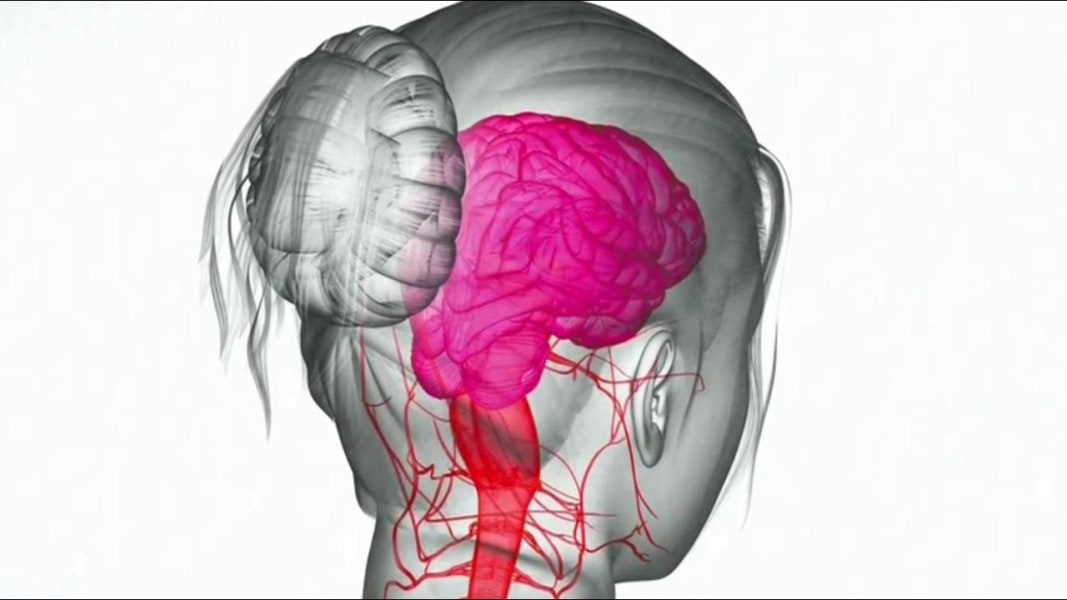Migraines, a Nervous System Abnormality Affecting Multiple Brain Areas
"[The seventh leading cause of global disablement, migraine] has received relatively little attention as a major public health issue."
"Research has shown that migraines represent] an abnormal state of the nervous system involving multiple parts of the brain."
"It's possible that a lot of therapies might be effective, including meditative breathing and relaxation techniques [but] that doesn't help once the train is out of the station."
"[Preventive therapy] should be considered if migraine occurs at least once per week or on four or more days per month."
Dr. Andrew Charles, neurologist, Goldberg Migraine Program, University of California, Los Angeles
 |
| WebMD |
Typically, migraine headache sufferers await a full-blown headache to present itself before they embark on treatment. Doing so, according to this neurologist who recently wrote an article for The New England Journal of Medicine, is the wrong way to set about managing the excruciating pain that migraines bring. The condition may be initiated during the childhood years, progressing to more frequent incidents in adolescence, and finally peaking in numbers of incidents at ages 35 to 39.
Two to three times more women than men are affected by migraines. And there are some women, estimated to be one in 25, that experience migraines more than fifteen days monthly. Recent research has concluded that results demonstrate that not only do migraines produce head pain, but it has now been revealed that migraines represent a whole-body disorder. In writing his article, Dr. Charles anticipated that physicians who are exposed to very little in medical school about migraines, might be edified by reading it.
At one time, before the advent of M.R.I.s or PET scans, it was thought that migraines were caused by swollen, throbbing blood vessels located in the scalp, and most often affecting one side of the head. Prompting the use of medications whose effect was to narrow blood vessels. Risky drugs for people with heart disease, and in any event, of uneven help to the broad spectrum of patients.
 |
| Bloomberg News/Landov |
Remedies such as over-the-counter NSAIDS like ibuprofen and acetaminophen, along with prescribed triptans and less-than-appropriate prescribed opioids represented the range of traditional aids meant to help, yet only a minority of sufferers received any benefit from their use. The fact that all of these remedies come with side effects, limiting doses and frequency for products that might help a few but not all, spelled an inadequacy waiting to be corrected with further research findings.
 |
| These are current FDA-approved migraine therapies. Peak sales for triptans, which are currently the biggest class of anti-migraine drugs and cost about $2,500 a year, were $7 billion in the U.S., according to EvercoreISI’s Umer Raffat. MarketWatch |
Now, it is recognized that migraine represents a brain-based disorder whose symptoms of onset can be recognized a day or so previous to full presentation of head pain, then persist for hours or days while the pain subsides. And with this understanding, neurologists who treat migraine, approach new methods of dealing with it. New, effective, less disruptive treatments are now available, or soon to be approved for clinical use.
Still, for effectiveness to result, these new therapies work best when patients react to the warning signs in a migraine's prodromal state, when symptoms such as yawning, irritability, fatigue, food cravings and light and sound sensitivity evince themselves prior to the headache itself. Yet, even with these new therapies to help deal with the pain, people have a tendency to await the full-blown headache before they initiate treatment, thus limiting effectiveness.
It is also known that certain situations are capable of triggering a migraine in susceptible people. Such as missing meals, irregular caffeine intake, erratic sleep patterns, and stress. Blood pressure drugs such as beta-blockers, anticonvulsant agents and antidepressants can also represent possible treatments. Botox is also approved as a migraine preventive, in the United States.
New brain-based remedies have been identified as useful, with few if any side effects. Such as hand-held or headband devices. Monoclonal antibodies taken by injection or through a vein and CGRP antagonists taken by mouth include new therapies in new classes of drugs directly affecting the peptides thought to trigger migraine attacks.
 |
| Still from video NBC News New class of drugs to help migraines |
Labels: Bioscience, Health, Migraines, Research

0 Comments:
Post a Comment
<< Home